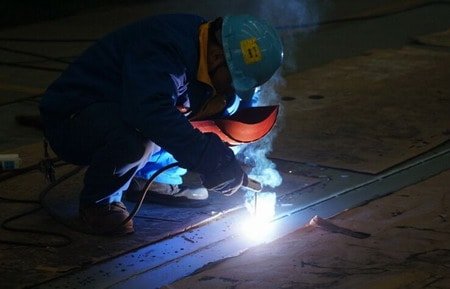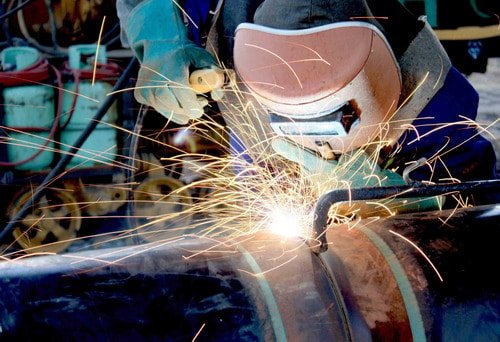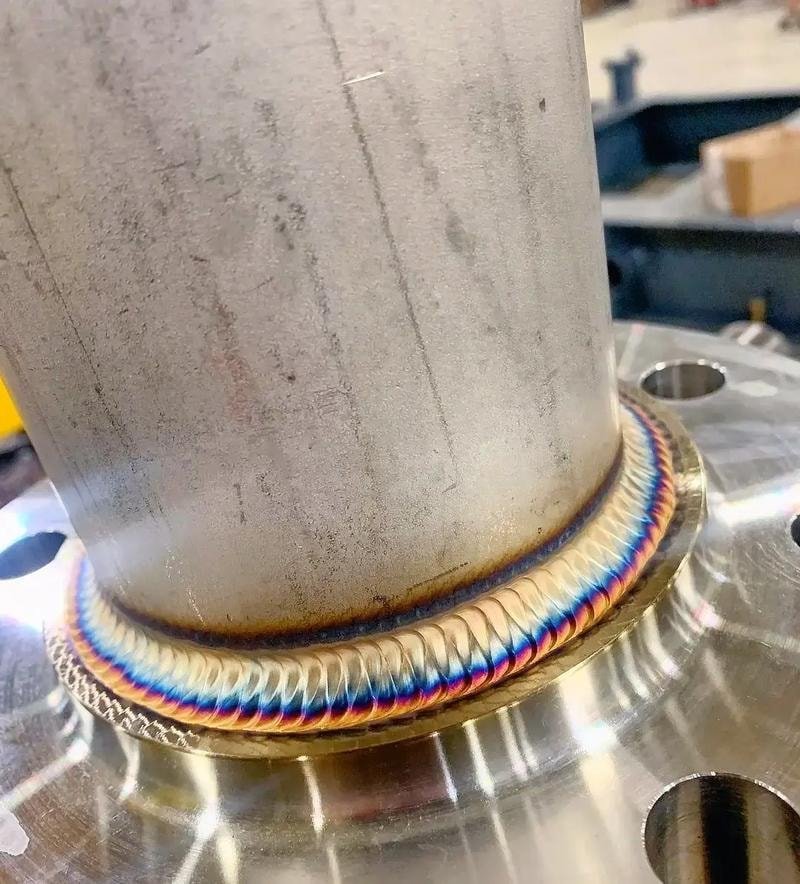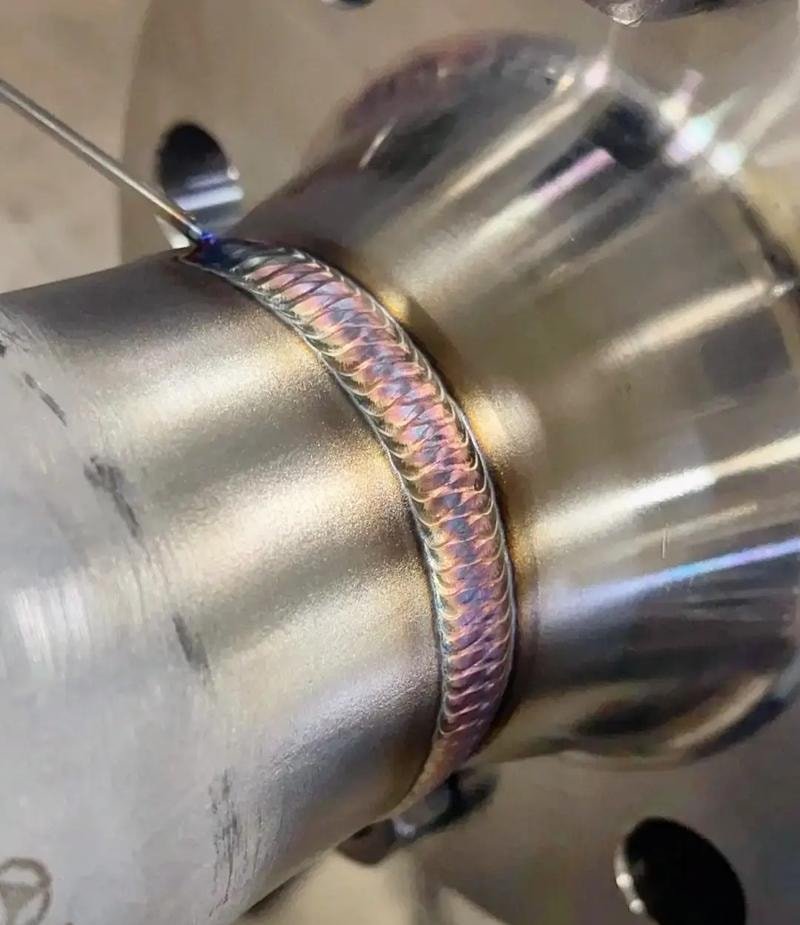Thermal expansion during welding occurs primarily due to uneven heating and cooling. Weld shrinkage, which leads to Distortion, significantly impacts welding quality for experienced and novice welders. Proper deformation can be minimized by carefully designing joints, controlling the welding process, and effectively employing post-welding treatments to minimize Distortion. Here’s a detailed overview of strategies to manage and reduce welding deformation:
1. Understanding Welding Deformation
Welding deformation is a common issue resulting from the thermal expansion and contraction of the weld metal and adjacent base metal. This deformation can lead to Distortion, warping, and residual stresses in the welded structure. Understanding the causes of welding deformation is crucial for effective prevention and mitigation. Factors contributing to welding deformation include non-uniform heating and cooling, mismatch in material properties, and improper sequencing or excessive heat input. By recognizing these factors, welders can take steps to minimize deformation and ensure the structural integrity of the welded component.
1. Optimizing Design and Weld Sequence Before Welding

The design phase plays a critical role in preventing welding deformation. Proper joint design, material selection, and pre-welding setup are essential for minimal deformation. Design considerations such as balancing welds around the neutral axis and controlling the welding sequence can minimize Distortion.
Minimizing Weld Volume
Objective: Reduce the amount of filler metal needed.
Methods:
Use smaller weld sizes while meeting strength requirements.
Prefer double-sided grooves over single-sided ones to cut down on filler material.
Use as few weld passes as possible with larger electrodes to minimize cumulative shrinkage and Distortion.
Avoid over-welding; excessive weld metal increases heat input, costs, and deformation risk.
Selecting the Right Joint Type
Butt Joints: Low filler metal requirements, ideal for thin plates.
Lap Joints: Higher deformation potential but suited for secondary structures.
Corner Joints: Must ensure proper weld sizing to avoid oversized beads.
Design the weld groove to counteract Distortion by allowing for effective shrinkage stress relief.
Material Considerations
Match welding processes to material properties:
Low-Carbon and Alloy Steel: Good for coarse wire, high-current, minimal deformation welding.
High-Carbon and Stainless Steel: Finer wire and multi-pass welding are required to manage heat concentration.
Using Fixtures and Pre-Deformation
Fixtures: Secure workpieces to prevent shifting during welding.
Pre-Deformation: Bend or position workpieces opposite to expected deformation. The amount of pre-deformation is determined experimentally.
3. Welding Process Selection and Optimization
Selecting the proper welding process minimizes distortion and controls weld shrinkage. Different welding processes have varying heat input levels, which can affect the Distortion and residual stresses in the weldment. For example, processes like MIG and FCAW tend to produce more heat than TIG and stick welding, which can lead to greater Distortion.
Optimizing the welding process involves considering factors such as the type of metal being welded, the thickness of the material, and the desired weld quality. By selecting the right welding process and optimizing parameters, welders can effectively minimize distortion and control weld shrinkage.
Some standard welding processes used to minimize Distortion include:
TIG Welding: Known for its low heat input and high precision, TIG welding is often used to weld thin materials and reduce Distortion.
MIG Welding: While MIG welding can produce more heat than TIG welding, it can still be optimized to minimize Distortion using a lower heat input and a shorter weld bead.
FCAW: This process is often used for welding thicker materials and can be optimized to minimize Distortion by using a lower heat input and a longer weld bead.
3. Optimizing the Weld Sequence
Optimizing the weld sequence is crucial in minimizing Distortion and controlling weld shrinkage. A well-planned weld sequence can help balance the stresses induced by the welding process, reducing the likelihood of Distortion. The weld sequence should be designed to minimize the amount of weld metal deposited in a single pass, as excessive weld metal can lead to increased shrinkage forces. Additionally, the weld sequence should be planned to balance the longitudinal shrinkage stresses, ensuring that the stresses are evenly distributed throughout the weldment.
To optimize the weld sequence, it is essential to consider the joint design, welding positions, and fixturing. The weld sequence should be planned to minimize the amount of heat input, as excessive heat can lead to increased Distortion. Intermittent welding can be used to control the heat input and minimize Distortion. The weld sequence should also be designed to balance the welds around the neutral axis, ensuring that the stresses are evenly distributed throughout the weldment.
2. Process Control to Control Weld Shrinkage During Welding

Controlling heat input, welding technique, and sequence significantly impacts deformation levels. To effectively minimize Distortion, it is crucial to consider design strategies such as balancing welds around the neutral axis and controlling the welding sequence to offset shrinkage forces and maintain the structural integrity of the weldment.
Low Heat Input Welding
Employ processes that minimize heat from the welding arc. Zváranie v ochrannom plyne (napr. TIG, MIG) vyhovuje tenkým materiálom a presnej kontrole.
Laserové zváranie: Vysoká presnosť s koncentrovaným teplom.
Plazmové zváranie: Ideálne pre tenkostenné komponenty.
Medzi techniky na kontrolu zmršťovania zvarov patrí používanie nižšieho príkonu tepla a efektívne riadenie postupnosti zvárania.
Prerušované zváranie
Prístup: Dlhé zvary rozdeľte na menšie časti s medzerami medzi nimi.
Výhody: Znižuje objem plniva a tepelný príkon pri zachovaní požadovanej pevnosti.
Menší počet priechodov zvaru
Používajte väčšie drôty a menej priechodov, aby ste znížili kumulatívne teplo a deformáciu. Pri tenkých alebo citlivých materiáloch uprednostnite techniky s jemnými drôtmi a viacerými priechodmi.
Symetrické zváranie
Koncept: Zvárajte symetricky na oboch stranách spoja, aby sa vyrovnali kontrakčné sily.
Aplikácia: Najlepšie pre veľké alebo geometricky symetrické obrobky.
Táto technika pomáha zvládnuť pozdĺžne zmršťovacie napätia vyrovnaním síl a znížením deformácie.
Optimálna postupnosť zvárania
Segmentové zváranie: Dlhé zvary rozdeľte na úseky a striedajte ich, aby sa teplo rovnomerne rozložilo.
Zváranie v neutrálnej osi: Začnite v neutrálnej osi alebo v strede obrobku a zvárajte smerom von.
Polohovacie zariadenia
Nastavte obrobok do optimálneho uhla (napr. do polohy v tvare člna), aby ste mohli použiť efektívne metódy zvárania, ako je väčší drôt alebo techniky s vyšším prúdom, čím sa skráti čas a deformácie.
5. Kontrola zmrštenia zvaru
Kontrola zmrštenia zvaru a riadenie príkonu tepla je rozhodujúca pre minimalizáciu deformácie a zabezpečenie štrukturálnej integrity zvaru. K zmršteniu zvaru dochádza, keď sa zvarový kov pri chladnutí zmršťuje, čo spôsobuje deformáciu okolitého základného kovu. Minimalizácia množstva zvarového kovu naneseného v jednom priechode je nevyhnutná na kontrolu zmrštenia zvaru. To sa dá dosiahnuť použitím takej postupnosti zvárania, ktorá vyrovnáva napätia vyvolané procesom zvárania.
Prerušovaným zváraním možno kontrolovať zmrštenie zvaru tým, že sa pred nanesením ďalšieho zvarového kovu nechá zvarový kov vychladnúť a zmrštiť. Táto technika môže pomôcť minimalizovať sily zmrštenia a znížiť pravdepodobnosť deformácie. Okrem toho môže zvárací stôl alebo zvarová drážka pomôcť kontrolovať zmrštenie zvaru tým, že poskytuje konzistentné a kontrolované prostredie pre proces zvárania.
6. Minimalizácia skreslenia
Minimalizácia deformácie je rozhodujúca pre zabezpečenie štrukturálnej integrity a presnosti zvaru. K deformácii dochádza, keď sa zvarový kov a okolitý základný kov počas zvárania rozťahujú a zmršťujú, čo spôsobuje deformáciu alebo ohýbanie zvaru. Na minimalizáciu deformácie je nevyhnutné kontrolovať postupnosť zvárania a prívod tepla.
Tepelné uvoľňovanie napätia môže pomôcť minimalizovať deformácie uvoľnením zvyškových napätí vyvolaných procesom zvárania. Táto technika zahŕňa zahriatie zvarového spoja na určitú teplotu a jeho pomalé ochladzovanie, aby sa znížilo napätie. Okrem toho môže použitie pevnej opory alebo zváracieho prípravku pomôcť minimalizovať deformáciu tým, že poskytne pevné a kontrolované prostredie pre proces zvárania.
3. Špecializované techniky a pomocné opatrenia: Prerušované zváranie

Chladenie vodou
Aplikácia: Pri zváraní tenkých plechov používajte vodou chladené medené bloky, ktoré odvádzajú teplo a znižujú deformácie spôsobené prehriatím. Tieto techniky účinne minimalizujú deformácie riadením prívodu tepla a rýchlosti chladenia.
Klinové bloky na polohovanie
Pri zváraní na tupo používajte polohovacie dosky a klinové bloky na udržanie stability a vyrovnania počas procesu.
Synchronizované zváranie
Viachlavové zváracie stroje zvárajú súčasne symetrické konštrukcie, čím zabezpečujú rovnomerný prívod tepla a minimálnu deformáciu.
Predhrievanie a riadené chladenie
Predhrievanie: Znížte teplotné rozdiely a zabráňte vzniku trhlín, najmä v prípade ocele s vysokým obsahom uhlíka.
Riadené chladenie: Na zníženie tepelného namáhania a deformácie použite izoláciu alebo postupné chladenie.
Zváranie kladivom
Zlepšovanie upravuje zvarovú guľôčku tým, že ju rozťahuje a stenčuje, čím zmierňuje napätie spôsobené kontrakciou.
9. Zváracie techniky a osvedčené postupy
Okrem výberu správneho procesu zvárania môžu zvárači používať rôzne techniky a osvedčené postupy na minimalizáciu deformácií a kontrolu zmršťovania zvarov. Niektoré z týchto techník zahŕňajú:
Prerušované zváranie: Ide o zváranie po krátkych úsekoch, pričom sa kov medzi zvarmi nechá vychladnúť, čo môže pomôcť minimalizovať deformácie.
Vyváženie zvarov: By balancing welds around the neutral axis, welders can minimize distortion and control weld shrinkage.
Longitudinal Shrinkage Stresses: Welders can minimize longitudinal shrinkage stresses and control weld shrinkage by using backstep welding and welding techniques in a sequence that groups welds.
Distortion Control: Welders can control Distortion and minimize residual stresses using preheating and post-weld heat treatment techniques.
Some best practices for minimizing distortion and controlling weld shrinkage include:
A welding table or fixture holds the workpiece in place and prevents movement during welding.
Ensuring the weld groove is appropriately prepared and cleaned before welding.
It used a welding arc that was consistent and controlled to minimize heat input and distortion.
Making as few weld passes as possible to minimize heat input and Distortion.
It uses a weld bead that is consistent and controlled to minimize heat input and Distortion.
4. Post-Welding Treatment and Deformation Correction of Residual Stresses

Mechanical Correction
External forces, such as hydraulic straightening machines, correct deformation in large structures.
Zváranie kladivom
Hammer the weld gently during cooling to elongate it, reducing elastic deformation. Avoid hammering the cap weld to prevent cracking or compromising integrity.
Heat Treatment
Stress Relief Annealing: Heat the workpiece to relieve residual stresses induced during the welding process.
Tempering: Lower the workpiece’s residual stresses at moderate temperatures.
Back-to-Back Welding
Weld two symmetrical parts back-to-back to balance contraction forces, using the rigidity of the structure to counteract deformation. Balance welds around the neutral axis are crucial in mitigating welding distortion by counteracting shrinkage forces, thereby reducing the risk of structural issues. These post-welding treatments are essential to effectively minimize Distortion and maintain the structural integrity of the weldment.
9. Implementation and Monitoring
Implementation and monitoring are critical steps in ensuring the effectiveness of distortion control measures. Monitoring the welding process and weldment for signs of Distortion, such as warping or bending, is essential. A welding arc monitoring system can help detect any irregularities in the welding process and alert the operator to take corrective action.
Regular inspection and testing of the weldment can also help ensure that the distortion control measures are effective. Nondestructive testing techniques, such as radiography or ultrasonic testing, can help detect any defects or irregularities in the weldment. A quality control program can also help implement distortion control measures consistently and effectively.
By implementing and monitoring distortion control measures, manufacturers can ensure the structural integrity and accuracy of their weldments, reduce the likelihood of Distortion, and ensure the quality of their products.
5. Key Principles and Summary
Weld Design:
Use small weld sizes, minimize filler material, and prefer double-sided grooves.
Process Execution:
Employ low-heat techniques, symmetrical welding, and segmental sequences.
Auxiliary Measures:
Utilize fixtures, water cooling, and positioners to stabilize and align workpieces.
Post-Welding Adjustments:
Mechanical or heat treatments should be applied to correct any remaining deformation.
Managing stresses induced during welding is crucial to ensure the structural integrity of the components.
By integrating these strategies into the design, welding, and post-processing stages, welding deformation can be controlled effectively, resulting in structurally sound, precision-fabricated components. These methods effectively minimize Distortion by balancing welds around the neutral axis and maintaining the welding sequence to offset shrinkage forces.
13. Conclusion
In conclusion, minimizing distortion and controlling weld shrinkage are critical aspects of welding that require careful consideration of the welding process, weld sequence, and welding techniques. Welders can reduce distortion and control weld shrinkage by selecting the proper welding process, optimizing its parameters, and using various methods and best practices.
Techniques like thermal stress relieving and post-weld heat treatment can minimize residual stresses. By understanding the causes of distortion and residual stresses, welders can take steps to prevent them and produce high-quality welds that meet the required specifications.
In addition, welders can use various tools and equipment, such as welding tables and fixtures, to help control distortion and minimize residual stresses. By following best practices and using the proper techniques and equipment, welders can produce high-quality welds that meet the required specifications and reduce distortion and residual stresses.
